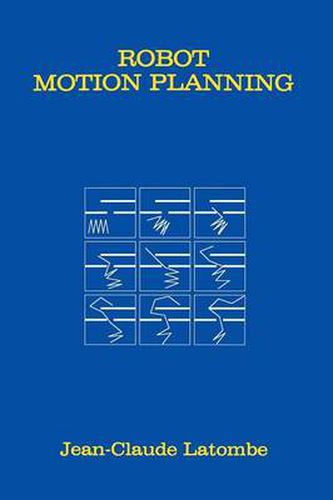Readings Newsletter
Become a Readings Member to make your shopping experience even easier.
Sign in or sign up for free!
You’re not far away from qualifying for FREE standard shipping within Australia
You’ve qualified for FREE standard shipping within Australia
The cart is loading…






This title is printed to order. This book may have been self-published. If so, we cannot guarantee the quality of the content. In the main most books will have gone through the editing process however some may not. We therefore suggest that you be aware of this before ordering this book. If in doubt check either the author or publisher’s details as we are unable to accept any returns unless they are faulty. Please contact us if you have any questions.
One of the ultimate goals in robotics is the creation of autonomous robots. Such robots will accept high-level descriptions of tasks and will execute them without further human intervention. The input descriptions will specify what the user wants dome rather than how to do it. The robots will be any kind of versatile mechanical device equipped withg actuators and sensors under the control of a computing system. Developing the technologies necesssary for autonomous robots is a formidable undertaking with deeply woven ramifications in automated reasoning, perception and control. Robot Motion Planning discusses a central problem in the development of autonomous robots. Motion planning, the central theme of this book, can be loosely defined as follows: how can a robot decide what motions to perform in order to achieve as a goal the arrangement of physical objects? This capability is eminently necessary since, by definition, a robot accomplishes tasks by moving in the real world. The minimum one would expect from an autonomous robot is the ability to plan its own motions. This book is aimed at the graduate level student intending to study further in robotics and spatial reasoning, at researchers in robotics, computer-aided design, computer graphics and computational geometry, and at engineers seeking to develop advanced computer-based systems in design, manufacturing, construction and automation.
$9.00 standard shipping within Australia
FREE standard shipping within Australia for orders over $100.00
Express & International shipping calculated at checkout
This title is printed to order. This book may have been self-published. If so, we cannot guarantee the quality of the content. In the main most books will have gone through the editing process however some may not. We therefore suggest that you be aware of this before ordering this book. If in doubt check either the author or publisher’s details as we are unable to accept any returns unless they are faulty. Please contact us if you have any questions.
One of the ultimate goals in robotics is the creation of autonomous robots. Such robots will accept high-level descriptions of tasks and will execute them without further human intervention. The input descriptions will specify what the user wants dome rather than how to do it. The robots will be any kind of versatile mechanical device equipped withg actuators and sensors under the control of a computing system. Developing the technologies necesssary for autonomous robots is a formidable undertaking with deeply woven ramifications in automated reasoning, perception and control. Robot Motion Planning discusses a central problem in the development of autonomous robots. Motion planning, the central theme of this book, can be loosely defined as follows: how can a robot decide what motions to perform in order to achieve as a goal the arrangement of physical objects? This capability is eminently necessary since, by definition, a robot accomplishes tasks by moving in the real world. The minimum one would expect from an autonomous robot is the ability to plan its own motions. This book is aimed at the graduate level student intending to study further in robotics and spatial reasoning, at researchers in robotics, computer-aided design, computer graphics and computational geometry, and at engineers seeking to develop advanced computer-based systems in design, manufacturing, construction and automation.